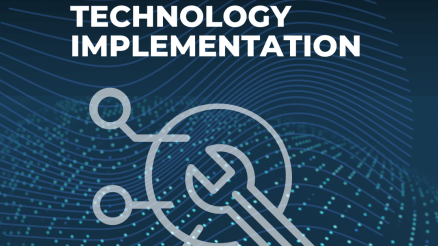Are you considering about adding more team members in your team?
The first step towards this is to craft a compelling business case for a new position.
But why?
Because it’s not just about finding room for an extra chair—it’s about strategically aligning your team for success.
In this blog post, we’ll guide you through the art of advocating for a new position within your organization.
Whether you’re amidst an expansion phase, facing evolving industry demands, or simply striving for better efficiency, this step-by-step guide will help you build a solid case that speaks the language of decision-makers and positions your team for the win.
Let’s embark on the journey of how to write a business case for a new position.
What is a business case?
A business case is a comprehensive document that outlines the justification for initiating a new project, making a significant business decision, or undertaking a specific action within an organization.
It serves as a tool to present a structured argument, providing key information and analysis to support decision-makers in understanding the potential benefits, costs, risks, and strategic alignment of a proposed initiative.
Read in detail: How to write a good business case
Why it is important to write a business case for a new position?
Writing a business case for a new position is essential for several reasons:
Clarity of Purpose
A business case defines the need for the new position and its purpose within the organization. If the new role and responsibilities are clearly articulated and aligned with the organizational goals then there are high chances that the case for new position will get approval of managment.
Strategic Alignment
Management and decision makers often question about need of a new position. One of the logical way is to tell them how a new position is aligned with overall strategic direction of the organization and how the new position will contribute to the long-term success and growth of the business. And the best way to present this information and rationale in a form of a business case.
Resource Justification
Management and other stakeholders also need to know what a new position cost their organization. A good business case for a new position also provides a detailed breakdown of the costs associated with the new position. It surely helps justify the allocation of resources, including budget, personnel, and time.
Risk Assessment
There are always some form of risks associated with every new position in an organisation. A good business case for a new position also identifies potential risks and challenges associated with the new position. And it also briefly outlines strategies for mitigating risks and addressing challenges.
Quantifiable Benefits
Like any other business idea, management is always interested in knowing benefit of a new position in comparison to the cost incurred against new position. So if a business case presents a cost-benefit analysis to showcase the expected return on investment, then it would be easier for management to take an informed decision.
Accountability and Evaluation
A well-crafted business case is also important because it establishes clear key performance indicators (KPIs) for the new position. If these KPIs are developed on very onset then it is quite helpful for both an employer and an employee to track progress and performance. So a business case provides a roadmap of how accountability and assessment for a new position will be conducted.
Features of Business Case for a New Position
Here are some key features of such business case that would be helpful for any business manager who is supposed to write a business case for a new position.
1. Analysis of Current Organizational Structure
The first step to write a business case for a new position is to identify gaps in the current organizational structure. This section serves as a foundation of the business case and rationale behind proposing a new position.
Below are some key areas that should be included in this analysis section:
Current Workload Assessment
Evaluate the existing workload within the organization. Identify departments, teams, or individuals that may be overburdened or struggling to meet their goals due to excessive tasks.
Capacity Analysis
Understand the capacity of the current workforce to handle the workload. Are teams stretched thin? Are there consistent bottlenecks in certain processes? Assess the overall efficiency and productivity levels.
Impact on Organizational Goal
Relate the workload analysis to the achievement of organizational goals. Determine if the current staffing levels are hindering the organization’s ability to meet targets, deadlines, or deliver quality products/services.
Assessment of Skill Gaps
Identify the strengths and weaknesses of team members in relation to the organization’s strategic objective. Anticipate the skills that will be crucial for the organization’s future success. This involves considering industry trends, technological advancements, and changes in customer demands. Are there emerging skills that the current workforce lacks?
2. Emerging Industry Trends
This information is vital for making the case for a new position, as it demonstrates a forward-thinking approach to adaptability and positions the organization to thrive in a dynamic business environment. When writing the business case, be sure to clearly articulate how the proposed new position directly addresses these emerging challenges and positions the organization for sustained success.
Market Analysis
In this section, a crisp analysis of the current state of the industry is presented. All the major shifts in market dynamics, customer preferences, and technological advancements need to be highlighted here and what are those emerging trends that could impact the organization.
Competitor Analysis
A brief analysis of competitor will also help to understand that how competitors are addressing those challenge. Assess their strategies and developments happening in the industry. Identify areas where competitors are gaining a competitive advantage or where the organization may be falling behind.
Regulatory Changes
A paragraph or so on regulatory framework is also helpful to build the context. It is important to mention the latest changes in regulations that could impact the industry. Identify what are those compliance with new regulations that may require additional roles or skills within the organization.
3. Job Role and Responsibilities
After setting up the context and rationale for a new position, now it is turn to define exact job title, core duties and responsibilities.
Job Title
Choose a job title that clearly communicates the role and is relevant within the industry and organizational context. The title should resonate with industry standards and be easily understood by both internal and external stakeholders.
Hierarchy and Positioning
Consider the hierarchical positioning of the new role within the organization. Ensure that the job title accurately reflects the level of responsibility and authority associated with the position.
Job Description
Provide a detailed description of the core duties and responsibilities associated with the new position. Clearly outline the day-to-day tasks and the role’s overarching purpose within the organization.
Connect the core duties to the broader objectives of the organization. Explain how the responsibilities of the new position contribute to the achievement of strategic goals and address current challenges.
Key Performance Indicators (KPIs)
Define measurable KPIs that will be used to assess the performance of the new position. These indicators should align with the overall goals of the organization and provide a basis for evaluating the success of the role.
4. Desired Qualifications
Clearly defining the desired qualifications helps in creating a profile for the ideal candidate. This section not only assists in the recruitment process but also reinforces the strategic alignment of the new position by ensuring that the candidate possesses the necessary skills and knowledge to contribute effectively to the organization’s objectives.
Skills and Competencies
Specify the technical skills required for the position. This could include proficiency in specific software, languages, or tools relevant to the role.
Identify essential soft skills such as communication, problem-solving, teamwork, leadership, and adaptability. These skills are often as important as technical expertise in contributing to a positive work environment and effective job performance.
If there are skills specific to the industry or niche, outline them clearly. This ensures that the candidate not only has a general skill set but also possesses industry-specific knowledge.
Educational Background
Define the minimum educational requirements for the position, such as a bachelor’s or master’s degree in a relevant field. Be specific about the type of degree required.
If there are preferred qualifications or certifications that would enhance a candidate’s suitability for the role, list them. This could include professional certifications, specialized training, or additional degrees.
Explain how the educational background is directly relevant to the responsibilities of the new position. For example, certain roles may require a background in a specific field to ensure a deep understanding of industry intricacies.
5. Cost-Benefit Analysis
When projecting costs related to salary and benefits, it’s important to not only consider the immediate financial impact but also to emphasize the long-term value that the organization will gain from investing in a qualified and motivated professional. This section of the business case provides decision-makers with a transparent view of the financial commitment required for the successful implementation of the new position.
Projecting Costs
Clearly outline the anticipated base salary for the new position. This should be competitive within the industry and commensurate with the level of responsibility associated with the role.
Detail the benefits that will be provided to the employee, including health insurance, retirement plans, bonuses, and any other perks or allowances. The benefits package is a crucial component of the overall compensation offered.
If applicable, include any variable or performance-based compensation elements, such as bonuses or commissions. Specify the criteria for earning these variable components.
Provide a comprehensive view of the total compensation package, combining the base salary and benefits. This gives decision-makers a clear understanding of the financial commitment associated with the new position
Anticipated Benefits
Explain how the new position will help in distributing the workload more effectively across the team or department. This can prevent burnout and ensure that tasks are completed with a higher level of attention and quality.
Highlight how the skills and expertise brought by the new hire will lead to specialized contributions, potentially accelerating project timelines and improving overall team output.
Discuss how the introduction of the new position is expected to save time for existing team members, allowing them to focus on more strategic or complex task.
6. Timeline and Implementation Plan
By providing a detailed timeline and implementation plan, you demonstrate a thoughtful approach to the integration of the new position into the organization. This section helps decision-makers understand the practical aspects of bringing the proposed role to fruition and ensures a well-managed and efficient process from approval to successful onboarding.
Recruitment Process
Clearly state the expected timeline for obtaining approval for the new position. This could involve meetings with stakeholders, discussions with the leadership team, and the formal approval process.
Specify the anticipated duration for creating and posting the job opening. Discuss the recruitment strategy, including where the position will be advertised and the methods for sourcing candidates.
Outline the time allocated for reviewing applications, shortlisting candidates, and conducting initial screenings. This phase may involve collaboration with HR and hiring managers.
Onboarding and Training
Detail the expected timeline for extending a job offer to the selected candidate and the subsequent acceptance period. This includes negotiations, if any, related to compensation and benefits.
If the selected candidate is currently employed elsewhere, factor in the notice period and any transitional activities. Plan for a smooth handover if needed.
Present the onboarding plan, including the orientation process, introduction to team members, and initial training sessions. Consider any department-specific or role-specific onboarding requirements.
Outline the training schedule for the new hire, including any skills development, software training, or industry-specific training. Specify who will be responsible for conducting the training sessions.
7. Setting up Key Performance Indicators (KPIs)
Establishing Key Performance Indicators (KPIs) is a critical step in ensuring that the success and impact of the new position can be measured effectively. Here’s how you can structure this section of the business case:
Identify Relevant KPIs
Determine specific, measurable metrics that directly align with the objectives of the new position. For example, if the goal is to enhance customer satisfaction, a relevant KPI could be the percentage increase in positive customer feedback.
Ensure that the selected KPIs are directly tied to the strategic goals and objectives outlined in the business case. This alignment reinforces the contribution of the new position to the overall success of the organization.
Define Performance Targets
Set realistic and achievable performance targets for each identified KPI. Consider historical data, industry standards, or organizational benchmarks to establish a baseline for comparison.
Specify the timeframe within which these performance targets are expected to be achieved. This could include short-term, medium-term, and long-term goals.
Continuous Improvement Mechanism
Incorporate feedback mechanisms to gather insights from team members, supervisors, and other stakeholders. This information can be valuable in adjusting strategies and optimizing the performance of the new position.
Acknowledge that KPIs and performance targets may need adjustments based on evolving organizational needs, changes in the business environment, or unforeseen challenges
Final Words
A well-articulated business case for a new position is a strategic document for organizations seeking growth and adaptability. Business leaders need all the rationale and information related to new position to make an informed decision. From identifying gaps in the current organizational structure to outlining the anticipated benefits and establishing key performance indicators, each step in process helps to write an effective business case for a new position.



